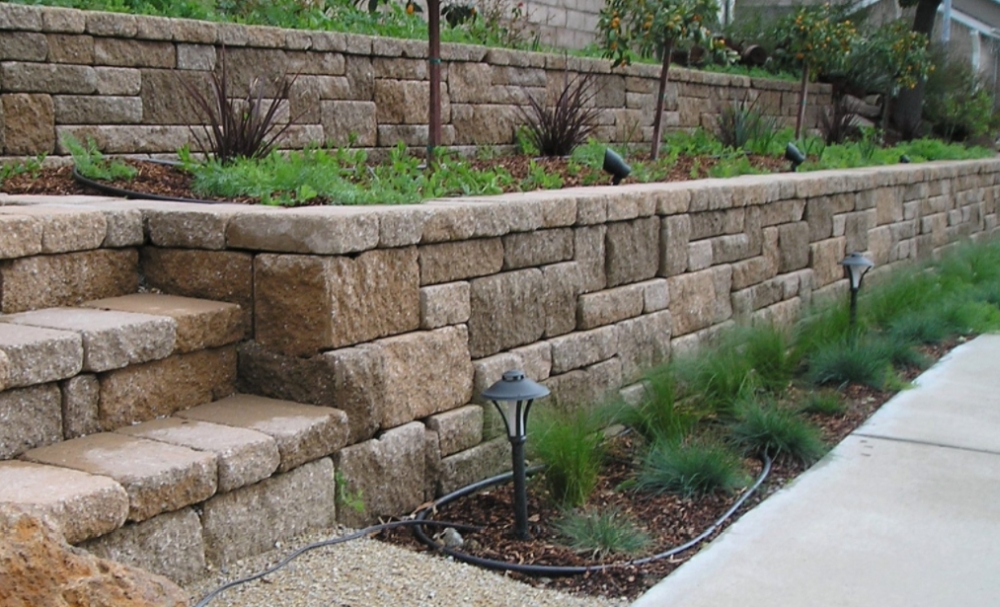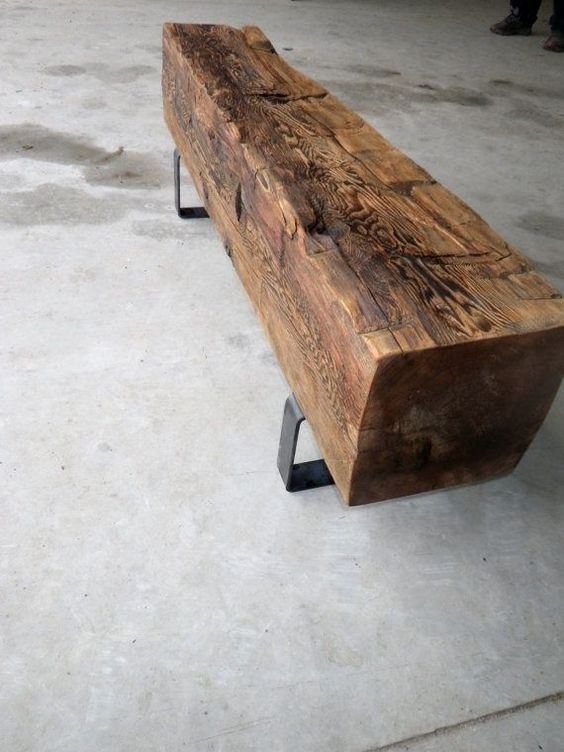There are a few things that can really bring an outdoor space together. Good landscaping in general can spruce up any yard. This includes some nice shade trees, water supplies, and personal touches with outdoor decor.

But of course, these things aren’t limited to these three items. In fact, a good retaining wall with repurposed materials is another thing that can make your yard look amazing without too much effort.
What Is A Railroad Tie Retaining Wall?
There are two things you need to know about to understand railroad tie retaining walls. The first thing is railroad ties. Railroad ties are beams that were originally used to create railroads, especially traditional ones.
Today, railroad ties are being replaced by metal counterparts, but they are still in use in certain areas. But when railroads are replaced, the railroad ties are repurposed, often landing in the hands of everyday people.
If you are lucky enough to find railroad ties to use, then seize the opportunity. There are a lot of different projects you can take on with railroad ties but a traditional project is a railroad tie retaining wall.
How To Build A Railroad Tie Retaining Wall

Building a retaining wall in general can be difficult. But when you learn what you need to know about retaining walls, you can build your retaining wall with confidence. Here are the steps you can take to build a railroad tie retaining wall.
Level The Ground
The first thing you want to do is to level the ground. Make sure that everywhere you are adding the railroad ties is even and flat. If you are building up, you can add a little dirt or gravel to the backside at this point.
If you are leaving the area as it is and building a wall against dirt already there, then you can mark the spots where the boards will go. It’s even more important to make sure the ground is level in this case.
Create A Base
After you are sure that the area is level, you can start adding the baseboards. There are a few different ways to do this. The most secure way is to dig down to half the height of a tie. This is usually about four inches.
This is so you can bury the bottom railroad ties to make it even more stable. It’s a good idea at this point to also add vertical boards on either side of the retaining wall. Dig down at least six inches and add the vertical boards every 6-8 feet.
Add A Moisture Barrier
This is also a good time to add a moisture barrier. This can also work as a weed barrier. Line everywhere the railroad ties will touch with the cloth or plastic. This will prevent moisture from gathering.
If you buy a moisture barrier and a weed barrier, you can add them both. Seeing weeds sprout up from your retaining wall does not look good at all. So this is an important step that won’t cost you much.
Create A Drain
There are many different types of drains you can create for your retaining wall. A great choice is a French drain which not only is effective but looks quite nice too. You can work with it to become part of your landscape design.
But a French drain isn’t the only option. There are plenty of different types of drains you can make, the point is making sure the water is led to somewhere you want it to go. Creating a reservoir is another great way to let it play into your design.
Stagger The Ties
When adding the railroad ties to your retaining wall, make sure to stagger them like blocks. They need to overlap or they won’t be secure at all. It’s a good idea to cut the ties in half at every other level.
You can also get randomly cut railroad ties to stagger, though this is difficult to work with if your retaining wall isn’t perfectly straight. So planning each tie is your best bet for a secure wall that is easy to build.
Secure The Ties
Every time you add a railroad tie to the wall, secure it with bolts made specifically for this purpose. It’s okay if you drill down a few inches so you don’t have to have 12-inch screws or bolts. This is a normal way to secure them.
A better size is 6-inches because any less isn’t very secure. You want to cover about half of the railroad tie, so drill down halfway and use a smaller bit to make a hole that will allow the screw to pass through.
Other Retaining Walls

There are many other types of retaining walls you can build, some of them even simpler than railroad tie retaining walls. So use your own resources or create a dream retaining wall by choosing the one that speaks to you.
Keep in mind that these are different materials you can use for your retaining wall. Because the technical and architectural types are something that you can look deeper into with a general retaining wall guide.
Brick
Brick is a safe choice with more options than you’d think. It is safer and more secure than railroad ties but it is harder to work with. In order to use brick, you need to know about bricklaying and how to use mortar.
Stone
Stone is one of the most beautiful types of retaining walls. It looks natural, magical, and has a natural draining system. Stone also needs to be laid by someone with experience with it but it isn’t as picky as a more symmetrical material.
Concrete
Concrete is a great option for those who want a contemporary design. It is difficult to lay because you need to create a mold for the concrete to be poured into. But with the right base, it is the most secure option.
Blocks
Blocks of any kind are a great choice because they are secure and stable. You can get wooden blocks, stone blocks, concrete blocks, or even glass blocks. They are easy to lay if you have any experience in laying them.
Caged Rocks
Caged rocks are a unique option with a garden look. They can’t be as tall as other types of retaining walls can be but if you make multiple rows of caged rocks then you can stack them quite well for a stunning design.
Vegetation
Vegetation walls are very unique and can be useful as well. Some vegetation walls are like stable hedges with a wood or stone base. But others are like vertical gardens that you can actually feed your family with.
Wood
Of course, railroad tie retaining walls are made with wood, but they aren’t the only type of wood you can use. Any type of wood can be used for a retaining wall, so choose what is available or what you like the look of.
More Ways To Use Railroad Ties
If you are more interested in the railroad tie aspect of this than the retaining wall aspect, then you’re probably looking for some ideas on how to use railroad ties. Here are some projects you can use your railroad ties for.
Railroad Tie Coffee Table
A railroad tie coffee table is the perfect thing for any man cave or warm, nature-inspired living room. You can build it with just the railroad ties or bring it together with a bar of concrete as shown here.
That’s what’s so great about railroad ties. They are versatile. If you know your way around a saw, you can even slice them longways to create thinner boards that can be used like traditional lumber from the lumberyard.
Railroad Tie Mantle
If you only have one railroad tie to work with, then a mantle could be all you need for that rustic flair a railroad tie adds. Tell stories around the fireplace about where you got the railroad tie from and imagine the history it has seen.
You can build an entire frame for your fireplace from railroad ties but if you only have one, this is a good way to showcase it well. Just make sure it is mounted well so it doesn’t fall or rattle when disrupted.
Railroad Tie Steps

This is a great compliment to your railroad tie retaining wall. You can create steps fairly easily with railroad ties as they are already the right size. Just make sure each step is level and secured well into the ground.
You will need to bury each one partway to make sure it is stable. From there, you can use gravel around it or build retaining walls on either side to add stability and create a gorgeous mini-hall in your yard.
Railroad Tie Bench
There are many different ways to make railroad tie seating. You can build a simple bench with two legs or build one with a raised back. If you know how to build a bench with one thing, you can build one with another.
Building benches isn’t difficult, but having a carpenter on hand your first time is a good idea since it will need to bear the weight of a human. The end result will be worth any money spent on getting a woodworker’s help.
The post Transform Your Yard With A Railroad Tie Retaining Wall appeared first on Home Decorating Trends - Homedit.




0 Commentaires